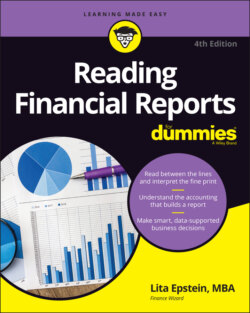Читать книгу Reading Financial Reports For Dummies - Lita Epstein - Страница 79
Checking Out the Chart of Accounts
ОглавлениеA company groups the accounts it uses to develop the financial statements in the Chart of Accounts, which is a listing of all open accounts that the accounting department can use to record transactions, according to the role of the accounts in the statements. All businesses have a Chart of Accounts, even if it's so small that they don't even realize they do and have never formally gone about designing it.
The Chart of Accounts for a business sort of builds itself as the company buys and sells assets for its use and records revenue earned and expenses incurred in its day-to-day operations.
If you work for a company and have responsibility for its transactions, you'll have a copy of the Chart of Accounts so that you know which account you want to use for each transaction. If you're a financial report reader with no internal company responsibilities, you won't get to see this Chart of Accounts — but you still need to understand what goes into these different accounts to understand what you're seeing in the financial statements.
Each account in a Chart of Accounts is assigned a number. This clearly defined structure helps accountants move from job to job and still quickly get a handle on the Chart of Accounts. Also, because most companies use computerized accounting, the software is developed with these numerical definitions. Some companies make up an alphabetical listing of their Chart of Accounts with numbers in parentheses to make finding accounts easier for managers who are unfamiliar with the structure.
The accounts in the Chart of Accounts appear in the following order:
Balance sheet asset accounts (usually in the number range of 1,000 to 1,999)
Liability accounts (with numbers ranging from 2,000 to 2,999)
Equity accounts (3,000 to 3,999)
Income statement accounts/revenue accounts (4,000 to 4,999)
Expense accounts (5,000 to 6,999)
In the old days, these accounts were recorded on paper, and finding a specific transaction on the dozens or even hundreds of pages was a nightmare. Today, because most companies use computerized accounting, you can easily design a report to find most types of transactions electronically by grouping them according to account type, customer, salesperson, product, or almost any other configuration that helps you decipher the entries.
